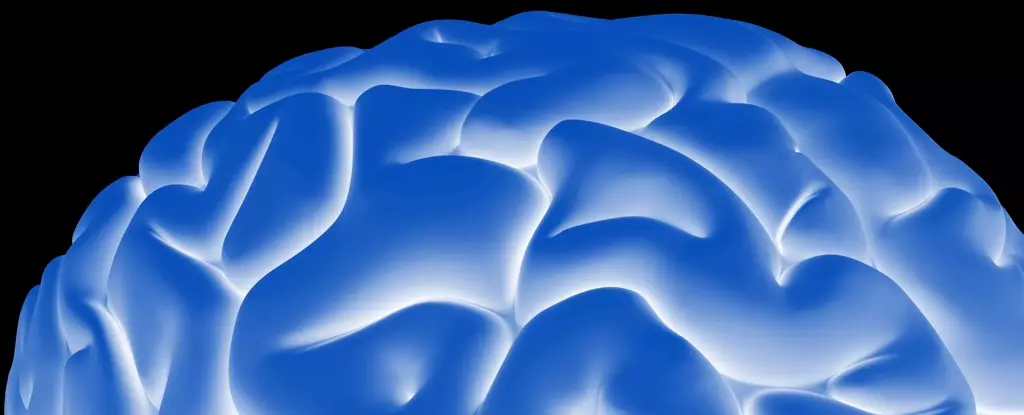Frontotemporal dementia is a rare form of dementia that affects a small percentage of the population, accounting for only one in every 20 cases. Unlike other forms of dementia, this disease primarily affects a person’s behavior, personality, and language ability, with memory impairment occurring in later stages. The diagnosis of frontotemporal dementia often results in a bleak prognosis, as patients tend to live for only around eight years after diagnosis. Unfortunately, there is currently no known cause of the disease, and treatments to slow its progression are non-existent. However, recent research conducted by Lund University has shed light on brain folds and their potential impact on frontotemporal dementia.
During fetal development, the brain grows and develops within the womb, forming distinctive folds as it expands. These brain folds play a crucial role in cognitive function later in life. One specific fold, called the paracingulate sulcus, develops later in the process and is not present in everyone. Its presence or absence can have a significant impact on cognitive ability. Studies have shown that individuals with a left paracingulate sulcus but not a right one have a cognitive advantage, performing better on tasks involving control and memory. Given these findings, researchers at Lund University and their colleagues decided to investigate the role of the paracingulate sulcus in frontotemporal dementia.
Frontotemporal dementia primarily targets the frontal lobes of the brain, particularly the central regions surrounding the paracingulate sulcus. To understand the role of this brain fold, the research team studied MRI brain images of 186 individuals diagnosed with frontotemporal dementia, excluding those with a genetic cause of the disease. Approximately 57% of the participants had a paracingulate sulcus on the right side of their brain. The researchers made a significant discovery: participants with this additional brain fold on the right side experienced a delayed onset of symptoms by an average of two and a half years. While this delay may seem insignificant, it provides meaningful additional time for patients and their families to prepare. However, despite the delayed onset, individuals with the paracingulate sulcus tended to deteriorate more rapidly and had shorter survival times compared to those without the fold.
The phenomenon observed in individuals with the paracingulate sulcus reflects a paradox called “brain reserve” in neuroscience. Brain reserve refers to the brain’s ability to withstand a disease before symptoms appear. There comes a point, however, when the disease overcomes these protective mechanisms and symptoms begin to manifest. At this critical juncture, individuals with high brain reserve experience a rapid decline, surpassing those with lower brain reserve. This explains why highly educated individuals may experience a delayed onset of Alzheimer’s disease but subsequently deteriorate faster once symptoms become evident. The research conducted by Lund University suggests that the paracingulate sulcus operates similarly, initially protecting individuals from symptoms and then accelerating their progression once symptoms arise.
The groundbreaking research conducted by Lund University is the first to identify a protective structure in the brain that delays the onset of symptoms in frontotemporal dementia. This discovery opens up new possibilities for developing treatments that preserve this protective quality and potentially keep symptoms and the disease at bay. By understanding the role of brain folds, such as the paracingulate sulcus, in the progression of frontotemporal dementia, researchers can now direct their efforts toward uncovering methods to enhance brain resilience and delay symptom onset.
The impact of brain folds on frontotemporal dementia has finally emerged from obscurity. Lund University’s research on the paracingulate sulcus has provided valuable insights into the development and progression of the disease. By identifying the importance of this brain fold in delaying symptom onset, researchers are now one step closer to unlocking new treatments and improving the lives of those affected by frontotemporal dementia. The journey to conquer this devastating disease continues, fueled by the hope that one day, a cure or effective treatments will be within reach.


Leave a Reply